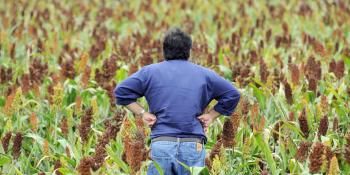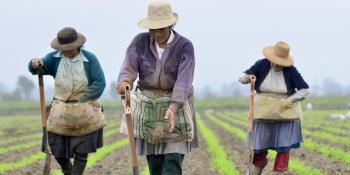Coffee, cameras and climate change: Seeing drought through the eyes of the farmer
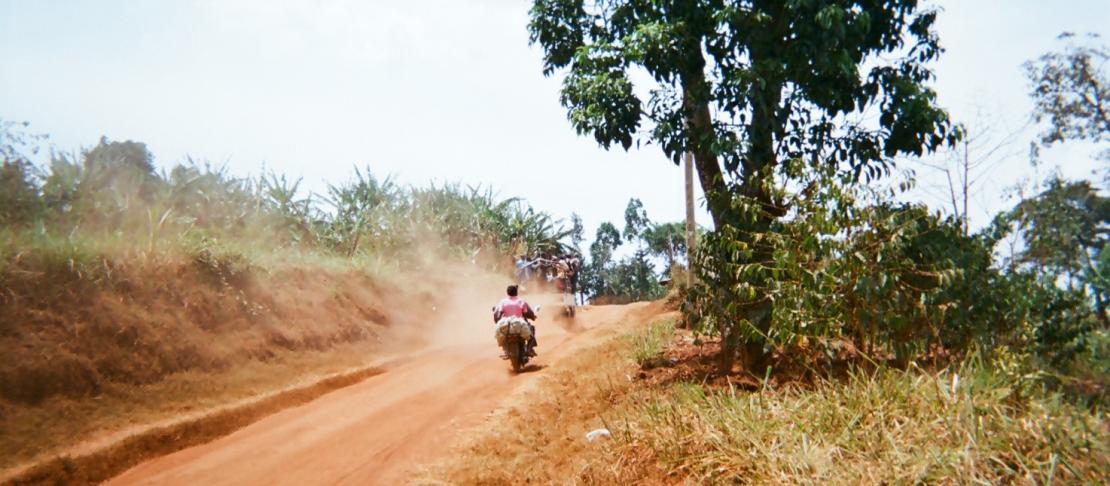
A photo exhibition at the Makerere Art Gallery shows how drought has impacted farmers’ livelihoods through their own eyes
At the end of February, during the tail end of a drought that has wreaked havoc across the Horn of Africa, coffee farmers on Mt. Elgon in Uganda were each given a disposable camera and asked to document how drought has been impacting their livelihoods. The images they captured cut across the lives of the farmers, and went far beyond just photos of the coffee plantations. Water, transportation, laboring in the coffee fields and family life were recurring themes throughout the photos taken.
The photos were part of a research project, with the aim of gaining an understanding of how farmers see the impacts of climate change.
The research is being carried out by the International Institute of Tropical Agriculture (IITA) in collaboration with Tim McDonnell, a Fulbright-National Geographic Storytelling Fellow, who is working across Africa writing stories on food security and climate change. In discussing the process, McDonnell said,
I was very impressed by the quality of the photos, and it captured photos that would have been nearly impossible for me to take without staying for weeks with the family to gain their trust.”
As part of McDonnell’s farewell, as his three months in Uganda were coming to an end, an exhibition of the photos was produced by McDonnell and co-hosted by the US Embassy and IITA at the Makerere Art Gallery.
The opening of the exhibition included a panel discussion with McDonnell, Onno Giller, an environmental anthropologist with IITA, and Sam Massa, a coffee farmer who had taken some of the photos that were on display. Niles Cole, a cultural attaché at the US Embassy, facilitated the discussion. The crowd had come to the exhibition out of a variety of interests, resulting in a broad array of questions asked. Questions were posed around the climate change projections, farmers’ perspectives and knowledge on climate change, the agronomic impacts of climate change on coffee, the possible adaptation techniques to the changing climate, as well as the choice of documentation method.
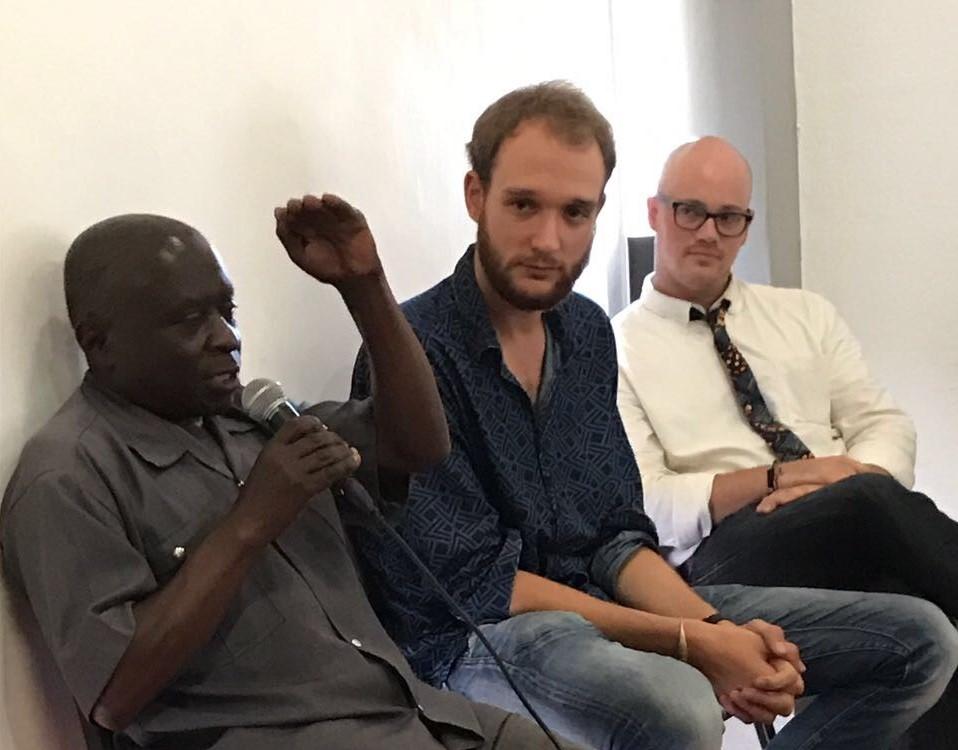
Sam Massa (left) answers a question during the panel discussion, while Tim McDonnell (far right) and Onno Giller (centre) look on. Photo: IITA
The presence of Sam Massa gave the panel discussion an extra edge, as he could give an impression of how it was to take part in the research. In a follow up interview, Massa said,
I went through the community to take photos, as I wanted to show my community to the outside world. I also wanted to take photos of good and bad agricultural practices to show my community so they can learn from them”.
This and other follow up interviews are also part of the research, as IITA is going back to the farmers to give them a copy of all the photos they took, as well as discuss each photo with them. The interviews are a means of participatory analysis of the photos, as the farmers are given a chance to give their own impression of the photos and what they had in mind while taking it.
In his concluding remarks at the end of the panel discussion, Massa said,
What has happened here should not be confined to these walls. Go and do something.”
He makes a valid point, and he had earlier pointed out that these photos captured problems in his community that should be addressed locally, and supported by local policies. The stories coming from these photo arrays can thus not only be used as an educational tool, but also to influence policymaking at all levels. Research is also being carried out that aims at addressing the problems that are captured by the photos.
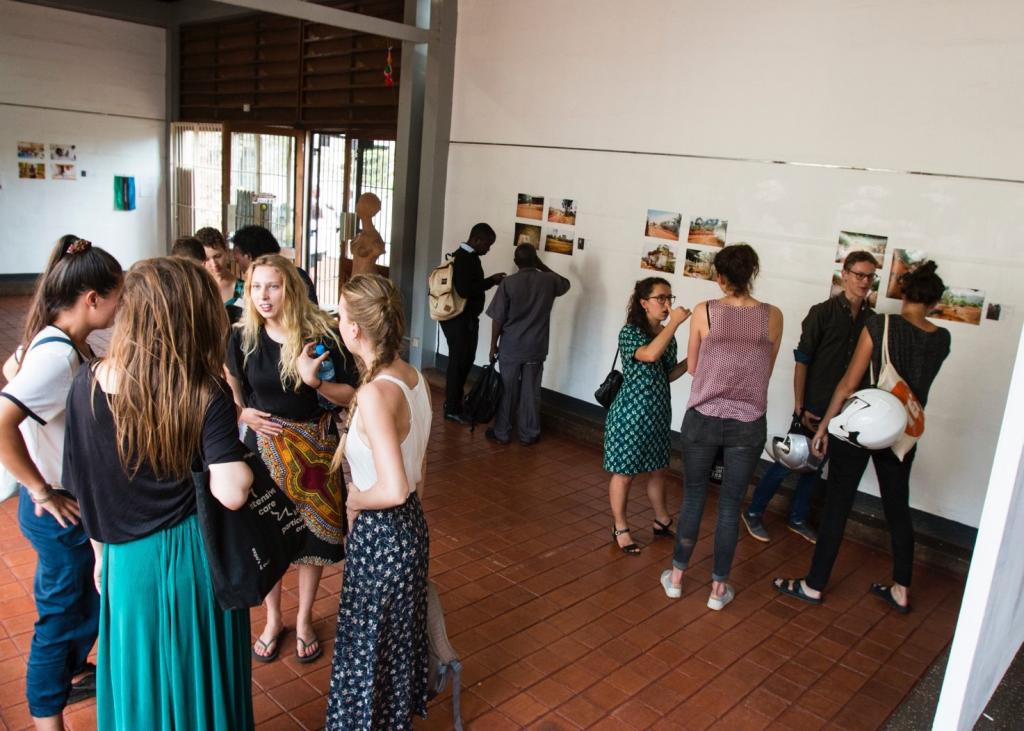
People get a chance to look at the photos and ask the panelists more questions. Photo: Tim McDonnell
After the panel discussion was finished, the exhibition stayed open for another hour, and there was a chance to ask the panelists more questions as people took the time to look at the photos on display. Elizabeth Kemigisha, Communications Officer with IITA, said,
I like that “art met science” to make otherwise big concepts like climate change appear very real.”
The exhibition stayed open for three more days before it was taken down. The research is still on-going, as interviews with the remaining farmers will take place over the coming months. The photos will also be exhibited again during the celebration of IITA’s 25 years in Uganda.
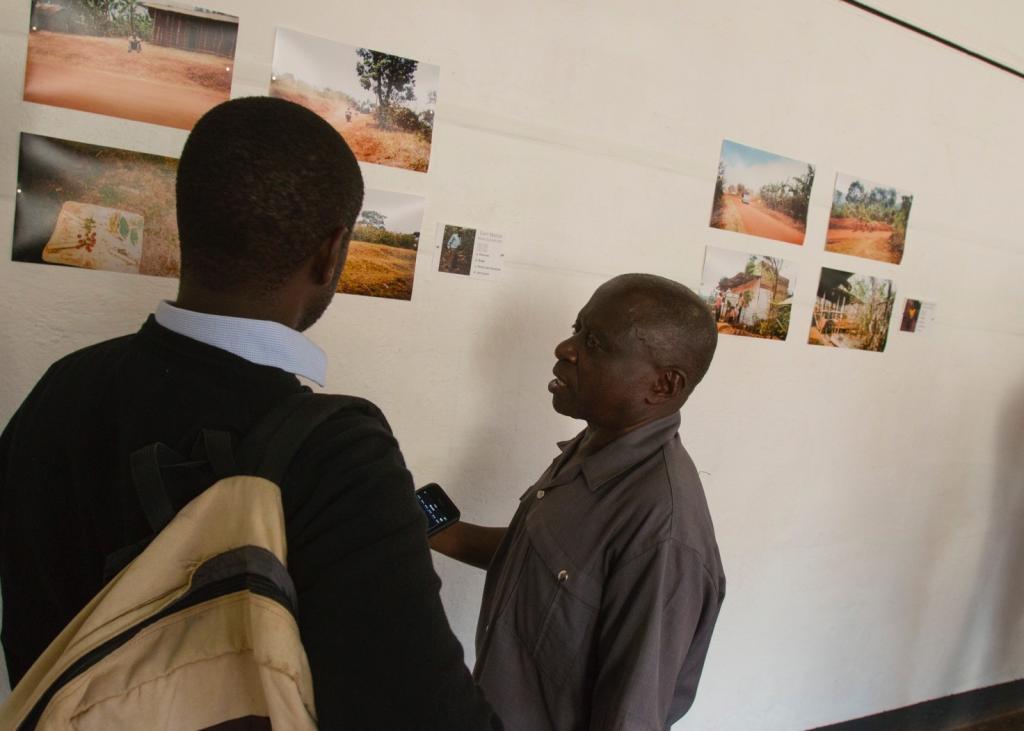
Sam Massa (right) gets asked questions about his photos. Photo: Tim McDonnell
Further reading:
Tim McDonnell, a Fulbright-National Geographic Storytelling Fellow, is working across Africa writing stories on food security and climate change. He has so far travelled to Kenya and Uganda, and is now in Nigeria. Find his stories and keep up to date with his escapades at http://www.timmcdonnell.org/.
If you are interested in learning more about the methodology or have any further questions, please contact Onno Giller (O.Giller@cgiar.org).
Onno Giller is an Environmental Anthropologist and Scaling and Innovations Specialist at IITA, and a PhD candidate at Wageningen University.

